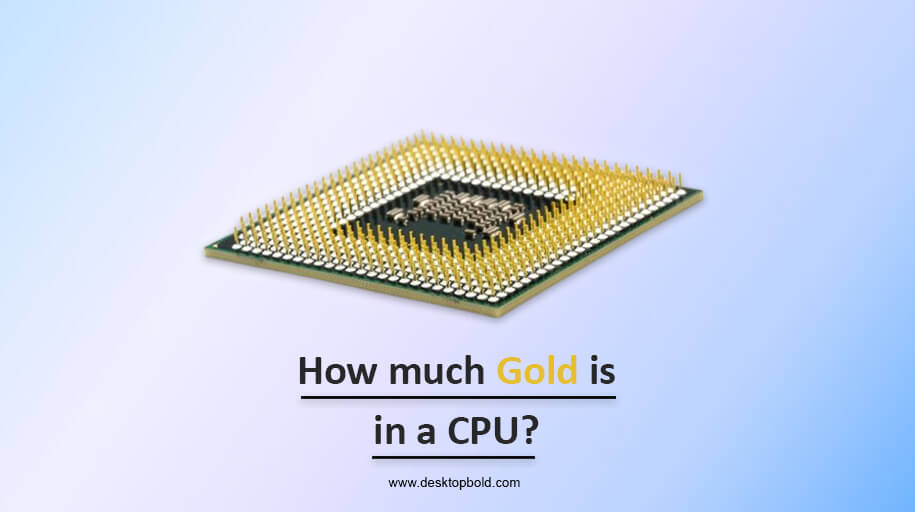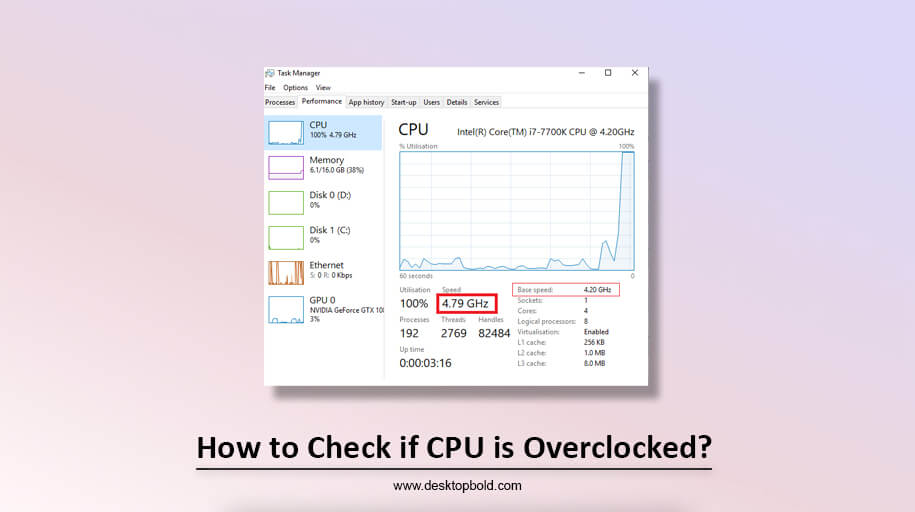Have you heard that the quantity of Gold in a computer is greater than the amount in a gold mine?
Because of this, only a few people are consistently on the watch for discarded computers and electronics, despite the reality that these are essentially gold mines. It is possible to separate the Gold and turn a healthy profit, especially if you have a significant quantity of computer devices.
By 2020, more than 1,500 metric tons of Gold will have been utilized in producing electrical devices, including computers. Extracting Gold from outdated computers and then selling it can result in a healthy profit margin if it is carried out on a big scale using the most modern metal extraction equipment. How much gold is in a CPU will be known to you in the given article?
In a nutshell, a pc contains about 0.310 grams of Gold or about $20 in value. Gold can find in a computer’s microprocessor, wire-tip coating, and other parts. It is more cost-effective to extract Gold from multiple computers at once.
Use of Gold in Electronics and Computer
Gold is a precious commodity, and many people keep it as property. Gold has consistently shown to be a profitable business in the financial market, both in the short and long term.
Because of its high electrical conductivity, Gold finds wider usage in modern electronics. In Electrical devices, Gold is used in:
- Corrosive reagents for electroplating
- Electric cables, hybrid inks, and solders made of Gold
- Adaptor and contact electroplating
- Conductive tracks and contact pads made of Gold are used in electronics.
Although Gold’s versatility, its high price makes it impractical for widespread use. Other materials in industrial applications have supplanted many uses of Gold, although Gold is still utilized in all electronics to ensure high performance and dependability.
Electroplating connectors and contacts in commercial computers with Gold is the primary usage for Gold.
For these, Gold is often employed as an:
- High resistance to corrosion
- Strong conductance to electricity
- Alloying Gold with a small number of metals improves its tensile properties.
When it comes to electrical properties, only silver and Gold compare, but they also fade out and corrode quickly. Therefore, if Gold were to be substituted in computers, the price would drop much further, but efficiency and longevity would suffer significantly.
How much Gold is in a CPU PROCESSOR?
Gold is an excellent insulator and is easily shaped. Therefore it is used for a processor’s pins, caps, and internal wiring. However, a central processing unit (CPU) yields just a small amount of Gold—less than 0.1 grams and up to about 0.3 grams.
You won’t get rich mining for Gold in obsolete (or modern) (CPUs), even when the price of Gold is through the roof.
Said specific processors are more richly endowed with Gold than many others. More Gold can be extracted from older processors than from modern ones since the latter employ innovations that have less of a dependence on Gold.
How much Gold is in a CPU pin?
The amount of Gold in a CPU pin is minimal, usually measured in micrograms or milligrams. Gold is a conductive material in the pins because it is an excellent electrical conductor and does not corrode or oxidize. However, the small quantity of Gold in a CPU pin means that it is not economically viable to extract the Gold for recycling.
It is worth noting that the use of Gold in CPU pins is just a tiny fraction of the total demand for Gold. Most of the world’s Gold is used for jewelry and investment purposes, with a smaller portion used in electronics and other industrial applications.
Overall, the value of the Gold in a CPU pin is negligible and not worth the effort required to extract it. It is much more practical to focus on recycling other components in electronic devices, such as copper, steel, and plastics, which have a much higher value.
Additionally, while Gold is a valuable metal, the amount used in CPU pins is so tiny that it is not economically viable to extract and recycle. The focus should be on recycling other components in electronic devices with higher value.
How much Gold is in a Computer Chip?
The extraction of Gold and other precious metals from computers involves industrial sources. Chips in modern central processing units (CPUs) and laptops weigh roughly 100 grams, so you can anticipate recovering 0.150 grams of Gold from each device. In addition, the cables and connecting pins contain Gold, which adds up to an additional 0.070 grams, and the gold-plated contacts add another 0.090 grams to the total weight.
Why use Gold in Electronics anyway?
Since Gold is commonly thought to be a preferred commodity, one may ponder why utilized in electric devices at the initial time. Gold’s unique combination of qualities makes it a prime candidate for use in electronics, where it enjoys approaching status.
In reality, the technology sector is one of the primary consumers of Gold. Items like vital digital equipment tend to consume small voltages and currents. Consequently, they are quickly disrupted by rust and oxidation at contact sites.
Because of its high conductivity even at low current densities and its resistance to corrosion, Gold is an excellent choice for this application. Therefore, Gold or gold plating is commonly used in producing electrical components, switching and circuits, soldered sites, parallel connections, and connecting strips because it increases their reliability and endurance.
Can you extract Gold from CPUs at home?
It will be a challenging nut to crack before you can extract the Gold from your computer’s CPU. Several safety measures are recommended if you decide to do it yourself at home, as the process involves potentially dangerous chemicals and sensitive equipment.
Gold extraction from a CPU is challenging for most people, especially those needing more field skills. Therefore, only attempt this once you are optimistic that you can succeed; otherwise, you could put yourself in harm’s way.
How to extract Gold from the Processor?
You will also need the processor(s), the safety mentioned above equipment, a tool, an Ac power distribution tester, connection testers, and a multi-tester.
You will also require the chemical items utilized in recovering Gold: Boric acid, Peroxides, Dilute Acid, and Methyl Hydrates.
How to get Gold from Computer Parts without Chemicals?
It is possible to remove Gold from electronics using chemicals, a fast and cheap method. However, only those well-versed in chemicals and with the necessary safety equipment should try this.
Proper ventilation and PPE are essential when working with chemicals on electronic components to prevent exposure to potentially deadly vapors. It raises the question: is there a non-chemical approach?
However, you shouldn’t immediately dismiss chemicals because some scientists have discovered an exciting way to employ mild acids like vinegar. Also available is the option of reversal plating.
Conclusion:
Some say stealing Gold from a computer or processor is an excellent business. The truth is that if you have one or a few processors, you won’t make very much money.
Buying used computers to recover their parts is also typically a losing venture. When buying a laptop for personal use, getting the nicest one you can afford and using it is preferable.
For some people, however, especially those who are open to chemical procedures to separate Gold from the processor, this may be a more straightforward task than it first appears.
It could be worthwhile if you have a large stock of new, obsolete CPUs and motherboards lying. Now that you understand how much gold is in a CPU?




